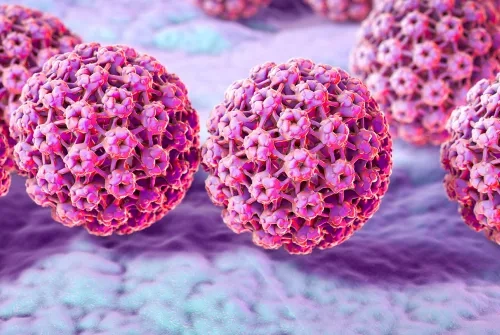Alo Yeditepe
Alo Yeditepe
All You Need to Know About Cervical Cancer
Women diagnosed “early” can beat it!
Continuous medical advances are giving women significant advantages in treating and preventing the risks of cervical cancer. But it is still important for women to know the A to Z of the disease.
The third most frequently occurring cancer in women in the world, cervical cancer is a form of cancer that can be successfully treated thanks to advanced early diagnostic and treatment methods. In particular, laparoscopic and robotic surgical procedures have made things much more comfortable for both patients and doctors as well as easing the recovery process and shortening the period of planned post-op preventive treatments.
The truth is that the greatest risk factor in cervical cancer is being a woman. That is why it is critically important for women to have high levels of risk awareness and to be proactive in overcoming the disease through early diagnosis. In this framework, Yeditepe University Hospital’s Gynecology and Obstetrics Specialist, who has particular experience in the prevention and surgical treatment of cervical cancer, gives Reference readers a potentially lifesaving briefing.
What is Cervical Cancer?
Cervical cancer is defined as cancers that develop in the lower section of the uterus (the cervix). One of the most frequently occurring forms of cancer in women, cervical cancer generally appears in young women of reproductive age.
What are the Signs and Symptoms?
Major risk factors in cervical cancer include starting sexual relations at an early age, sexual relations with multiple partners or men with multiple partners, sexually transmitted disease, HIV infection, smoking, and exposure to synthetic estrogen in the womb. But there is no question of genetic predisposition. The most common symptoms are excessive vaginal bleeding, vaginal discomfort, foul smelling vaginal discharge and postcoital bleeding.
How is Early Diagnosis Possible?
Although in its advanced stages cervical cancer is a life threatening disease, it is actually a type of cancer that is preventable and treatable if diagnosed early. A PAP smear test is the universally recognized and advised method to achieve early detection. HPV (Human Papilloma Virus) screening has recently been added to routine screening programs.
Is It Contagious?
The HPV virus that causes cervical cancer is sexually transmitted and cervical cancer develops in the wake of genital HPV infection. Therefore protected sex is key in terms of preventing HPV transmission.
Who Should Get Cervical Cancer Vaccination?
HPV infection can be prevented with the HPV vaccine, which aims to protect women against HPV before they are sexually exposed to it. 2 vaccines are approved by the US Federal Food and Drug Administration (FDA):
A 4-valent vaccine covering four types of HPV (HPV types 6,11,16 and 18). It is used to prevent cervical cancer, genital warts and anal cancer in girls and women between the ages of 9 and 26. It is also approved for boys and men in the same age group. Scientific studies have shown that it provides protection up to the age of 45.
“Robotically assisted laparoscopic protective uterine surgical procedures are comfortable for the patient and restore women’s chances of having a baby.”
New Vaccination on the Way!
In addition to the vaccines currently used to prevent cervical cancer another one is imminent. Known as ‘Gardasil 9’, it provides higher protection (95%) when used in combination with the other two types. The new vaccine is expected to begin being used in Turkey within the next few months.”
A 2-valent vaccine against HPV types 16 and 18. It is approved for girls and women between the ages of 9 and 25 and apart from warts it is used for cancer prevention. Routine vaccination involves a 3-shot program (both 4- and 2-valent) administered to 11-12 year old girls.
Can Cervical Wounds Become Cancerous?
Most cervical wounds are normal physiological changes occurring in menstruating women. They can become precancerous cancer lesions when exposed to the HPV virus. Therefore these lesions, which are identifiable by means of gynecological examination and a PAP smear test, must be treated.
How is It Treated?
There are established protocols based on scientific data for the treatment of cervical cancer. Vaccination is important as a primary preventive treatment against the disease. Secondary prevention of cervical cancer is by screening for precancerous lesions and early diagnosis followed by adequate treatment. This involves smear tests and screening for the HPV virus.
In the event that both screening tests are carried out in combination with negative results, there is no need for further screening for a period of three years. These days more advanced liquid-based pap testing may be chosen as it renders clearer and more accurate results. In cases where there are early stage precancerous lesions graded as CIN 1, active surgical treatment is not required. The patient returns for further check-ups after six months. On the other hand, removal of the affected area is the most effective method of treatment in CIN 2 and CIN 3 cases. Therefore the appropriate early stage treatment is surgery, which yields highly positive outcomes when the disease is caught early. Radiotherapy and chemotherapy may be used in inoperable cases. Early diagnosed cervical cancer cases have a fiveyear survival rate of 70-88%; this can rise to 98-99% when the disease is caught at the beginning of its early stage.
What’s the Difference Between Cervical Cancer and Cancer of the Womb?
Cancer of the womb (or uterine cancer) originates in the inner surfaces of the uterus and is medically termed ‘endometrial cancer’. The 6th most frequently occurring cancer in women, and contrary to cervical cancer, it generally occurs in older women (mostly over the age of 55). Patients generally go the doctor complaining of post menopausal or non menstrual bleeding; other symptoms include vaginal discharge, pain during intercourse, and difficulty in urination.
Endometrial cancer risk factors include not having given birth, late menopause, hormone replacement treatment or unmet endogenous estrogen (e.g. anovalation, polycystic ovary disease, granulosa cell tumors), or exposure to medications that affect the development of the uterine wall. The risk of uterine cancer is also elevated in some cases of familial cancer syndrome, breast and colon cancer. In modern societies uterine cancer is more frequently related to obesity; cervical cancer is more prevalent in countries with lower socio-cultural and economic levels of development.
“The 4-valent vaccine is also recommended for 11-12 year old boys and previously unvaccinated males between the ages of 13 and 21. Males who have, or likely to be exposed to, HPV infection are also more prone to anal, intraoral and throat (oropharyngeal) and penile cancers. Therefore, vaccination is also advised for boys.”
“Screening is not recommended in women under the age of 21 or over the age of 65 who have undergone previous screening with negative results, unless there is the presence of any high risk factor. Women between the ages of 21-29 should undergo a PAP smear test every 3 years, those between the ages of 30-65 should undergo HPV and PAP smear testing 5 years or just the PAP test every 3 years.”
Is It Possible to Get Pregnant in Spite of Cervical Cancer?
It is possible for a woman with undiagnosed cervical cancer to get pregnant, as is the case for women undergoing cervical cancer treatment. In early stage cervical cancer cases where the size of the tumor has not reached a certain extent, women can maintain their chance of having a baby with uterine protective surgical procedures.
Uterus-Sparing Procedures
Uterine protective surgery involves removal of part of the cervix, one third of the upper section of the vagina, and part of the connective tissue around the cervix. The remaining part of the uterus is reconnected to the vagina (anastomosis) after removing the intraabdominal lymph nodes.These procedures are carried out with meticulous expertise at Yeditepe University Hospital, where we currently have a particular focus on nerve-sparing surgery. These robotically-assisted laparoscopic procedures, designed to spare the uterus and especially its nerves, offer far higher levels of comfort and ease to both patient and surgeon. Traditional surgical methods fail to spare the nerves leading to the bladder well; this makes it impossible to avoid postop urological problems such as the inability to urinate comfortably and long-term catheter usage. Nerve sparing surgery serves to ensue the patient can return to normal life without any problems and without the need for chemotherapy and radiotherapy.
This content was prepared by Yeditepe University Hospitals Medical Editorial Board.
”
See Also
- Contraceptive Methods: Birth Control and Effective Protection Options
- What is Vaginal Infection? What are the Symptoms?
- What is HPV? What are the Symptoms of HPV? How is it Transmitted?
- Frequently Asked Questions About HPV Vaccine
- Can Women With Gynecological Cancer Have Children?
- Can Cervical Cancer in Women Be Prevented?
- Be Careful When Consuming Sage During Pregnancy
- HPV Infection Also Affects Men, Not Just Women
- Do Ovarian Cysts Prevent Childbearing?
- No Obstacle to Having Screening Tests in Gynecological Cancers
- Men Should Also Be Vaccinated Against Cervical Cancer
- Urinary Incontinence Causes Depression in Women
- Endometrial Cancer
- Ovarian Cancer
- External Genital Area (Vulva) Cancer
- Can Cervical Cancer Be Prevented in Women?
- Pregnancy Helps Reduce the Risk of Uterine Cancer
Alo Yeditepe



